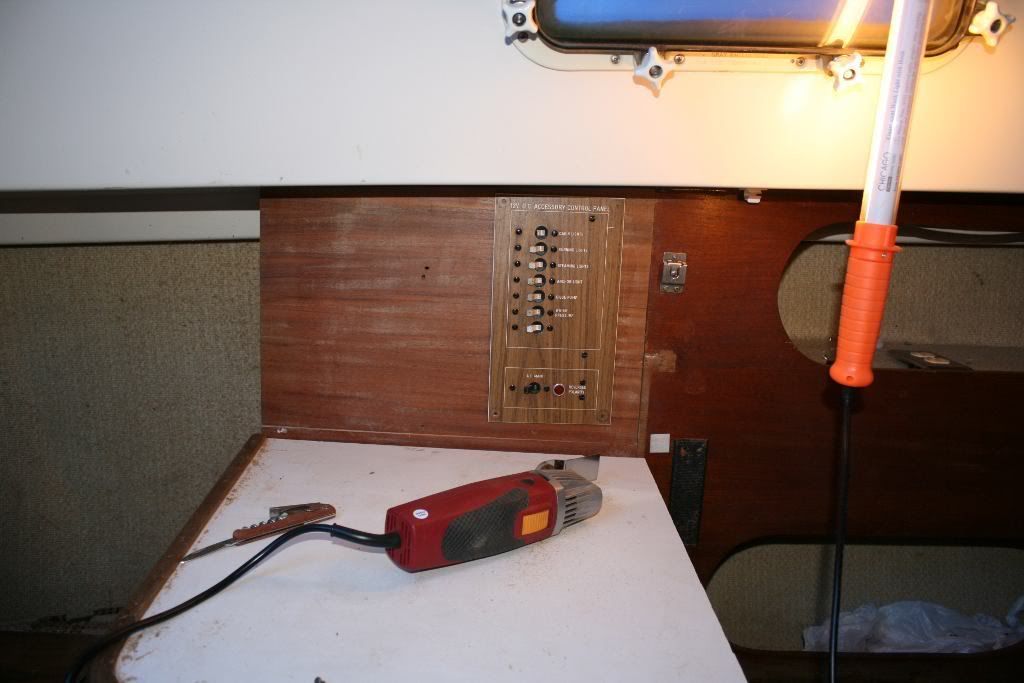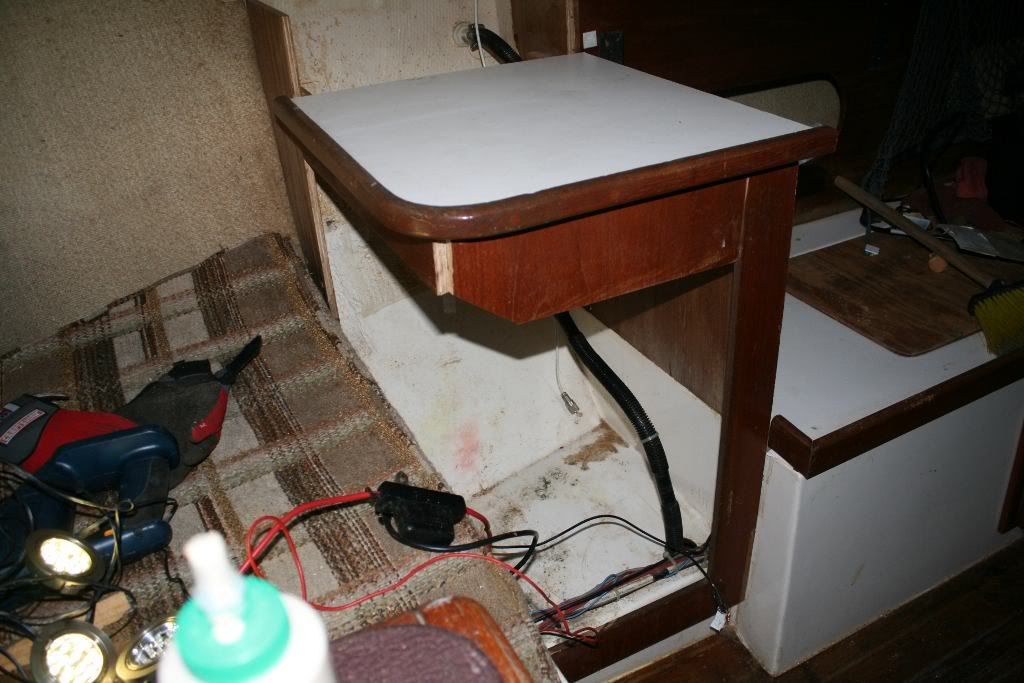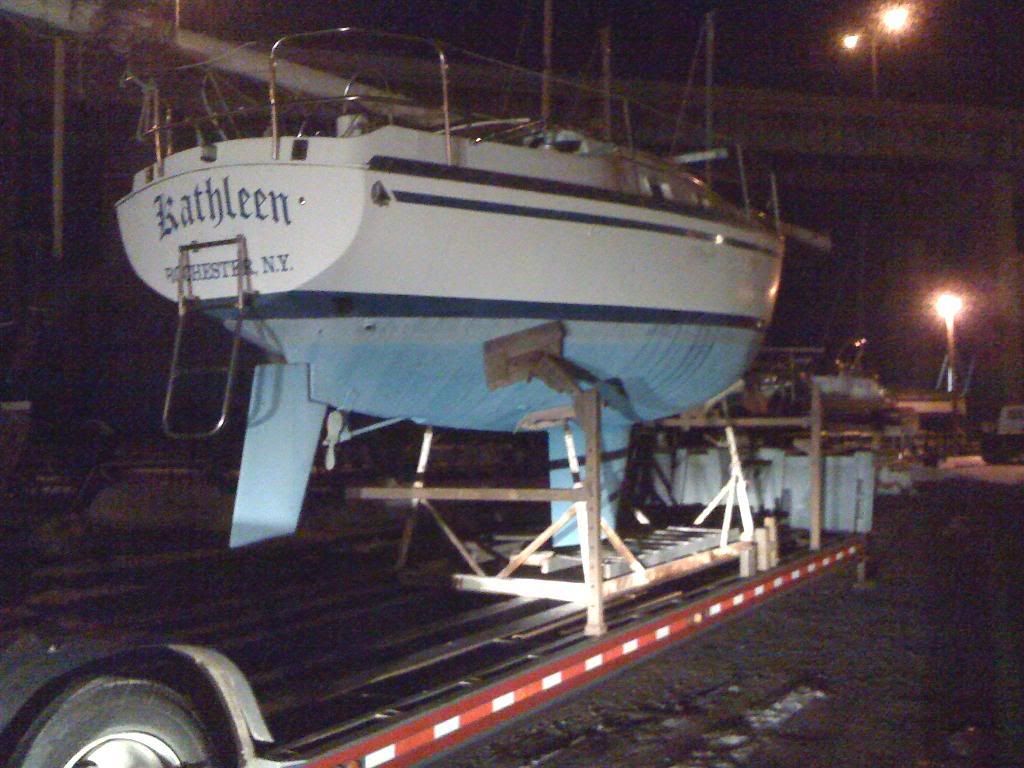I saw this boat for sale early this summer and it piqued my interest, it's the year and model that I want, and the price was attractive. However after an initial inspection I crossed it off my list, the deck looked terrible, it was solid but had paint peeling everywhere, and a depression around the mast step, so I ignored it for awhile, then I saw the price was lowered by $1000, still I said nah, too much work. Then after I sold my O'day 192, and after a lot of research about repairing the mast step, I decided to go and look a second time. This time I inspected the interior which was in excellent shape, the sails which were in terrible shape (except the genoa), and the mechanicals which were good and bad. The boat needs a lot of cosmetic work, and I need to repair the mast step as water has penetrated the core there and the step is deformed.The boat is listed as being mechanically sound, which it really isn't. So I made a list of what it needs that were not mentioned in the ad, totaled them up (parts only, if I included someone elses labor the number would be in the negative, I don't think the owner would accept an offer where he had to pay me to take it) and made an offer. The owner countered with a reasonable offer that I accepted, now the real work begins!
There are many good things about the boat, the deck is solid other than at the mast step, the engine runs like a top, and it's dry, no deck leaks. One of the reasons I wanted this particular model over other manufacturers of the same era is, Hunter does not put a lot of hardware through coring material. The chainplates are all attached to the hull through solid deck, not attached to bulkheads passing through cored decks. This makes for windward performance that is less than ideal, but sure is stronger and needs less maintenance. The lifeline stanchions as well, do not go through any core. The areas where I need to worry about water intrusion are the mast step (again), the hardware (there is not a lot of it), and the hand rails along with that little teak strip along the cabintop. These areas are solid but from what I read are just screwed into the core material there, which I believe is plywood. I will confirm that when I remove them to repaint the deck.
The deck, you can't see how bad it is in this photo










